Natural dyeing makes me happy. I love the process and then the thrill or disappointment of the fabric and threads that come out of the dyebath.
This adventure started when a friend gave me some dried weld plant material which gave a useful yellow.
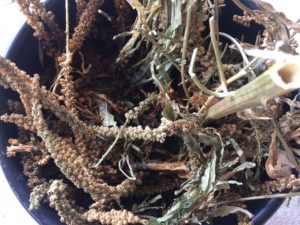
Around the same time as I did this I watched a channel 4 programme, sorry the name escapes me, but the concept was taking a painting which included historical costume and recreating the costume. One episode, showed weld being used to dye fabric which had been mordanted in urine. (a mordant is necessary to fix the dye to the textile. I normally use alum.) So I thought I can do that and I did and it wasn’t smelly. The resulting fabric and threads were more vibrant than those mordanted in alum .
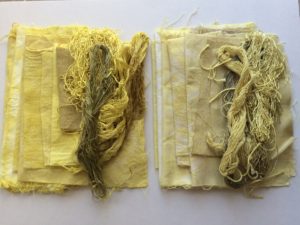
The TV programme showed how when the weld dyed fabric and threads were overdyed with indigo, they came out green.
So I had to try indigo dyeing. The process of dyeing with indigo is unlike any other. After a bit of on line research I decided to make it easy on myself and buy a kit from Art Van Go.
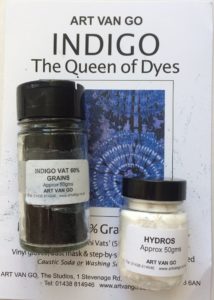
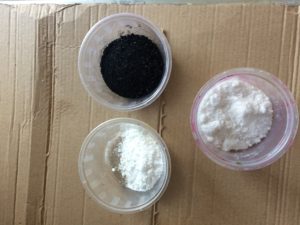
The instructions recommended safety gear

I carefully made up the dyebath according to the instructions. The most important thing is not to incorporate air. Then the dyebath is covered tightly in cling film and left for at least an hour.
.

Indigo doesn’t need a mordant, fabrcs and threads just need to be washed and wet. I tied some fabrics to get a shibori/ tie dye effects and others were just added.
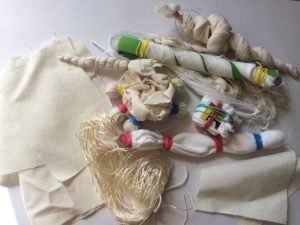
I use a mixture of natural fabrics, cellulose ones in the form of cotton and linen and protein in the form of wool and silk. Each fabric will take the dye differently, resulting in different shades of the dye.
The textiles must be submerged in the dyebath slowly so as not to add air and then left for up to 2 minutes. Then the magic…. the fabric and threads are taken out slowly….as they come out they are green and then as the indigo oxidises they become blue.

or if predyed yellow, green (yes I know it looks blue, you’ll just have to believe me !)

I had used metal when tie dyeing weld (yellow) and then kept the fabric damp in a plastic bag until I did the indigo dyeing probably a month later. By which time the metal had rusted, so I got another colour.

When my textiles were dried and ironed they looked lovely.
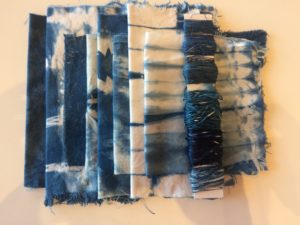

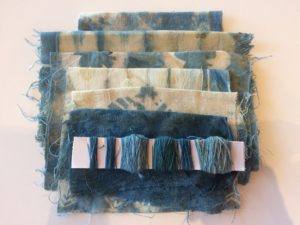
I’ve used some of the them in my work for our next exhibition at Woodbridge in September 2020. I hope you’ll come to see them.
